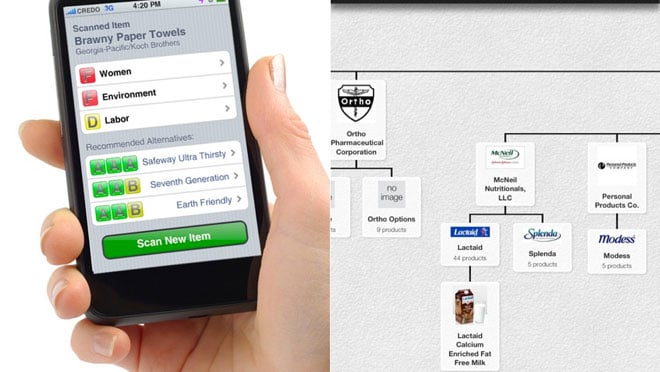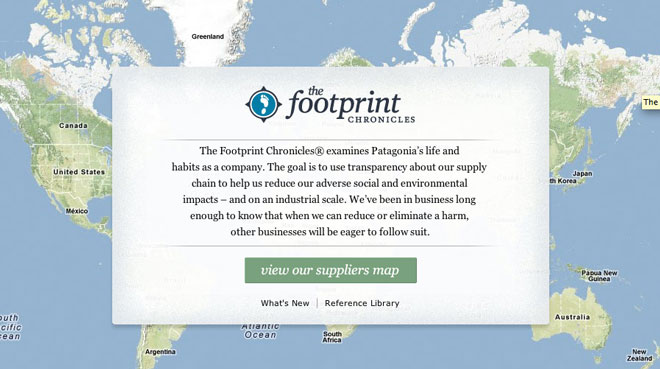Consumers no longer believe marketing messages on face value
If you want to build a future-thinking brand, it must be honest and transparent. Honest corporate policies are not always black and white, so brands that tell the whole truth win. The zeitgeist is changing faster than most brands can evolve. There's a movement among consumers to domore research into the brands and products they use everyday. If your brand isn't providing consumers with an honest story, they will "out" you. Earlier this week a new app launched called Buycott that helps consumers spend money on products that reflect their values. Simply scan a barcode and a products' brand, brand ownership, and corporate principles are on display within seconds (both good AND bad). With writeups in Forbes, CNET, Jezebel, Fast Company, The Independent, NY Daily News, International Business Times, and more the Buycott servers were overloaded within 24 hours with consumers looking for the truth behind the brands they buy.

Through social media proliferation and increasing media scrutiny, weary consumers no longer feel that they can trust marketing messages, and therefore can't create real brand trust. How can you create consumer loyalty without brand trust?
The Steps to Brand Transparency
- Define a clear mission. A company with a clear, believable mission resonates with consumers. One of reasons we are so proud of our long partnership with Perdue Farms is their clear mission to raise better chicken and put better quality food on your dinner table. Their USDA Process Verified takes steps above and beyond USDA regulations to communicate how their chickens were raised, fed and processed.
- Accountability. Fess up when something goes wrong, connect with consumers and apologize. If you've ever faced a product recall or marketing blunder, you know how important honesty is in a time of crisis. Immediate disclosure of the facts, and honest speak about how you intend to deal with it can make all the difference from turning off your consumers to retaining them. And when the crisis is over? Set up a clear chain of accountability to guarantee the mistake won't happen again.
- Cut the crap. Eliminate the marketingspeak and jargon. Talk to your consumers on their terms. For example, grocery shoppers are tired of misleading claims on packaging and often struggle to keep up with the language nuances. All Natural? Made with Whole Grains? Only if you read the fine print you'll find that neither the FDA or USDA has set guidelines for what "whole grains" means. Often you'll find less than 50% of "whole" grains in packaging containing the messaging "Made with Whole Grain". Does 30% sound whole to you? How about 50%?
The key to trust is honesty
If you are going to highlight your products nutritional value, be prepared that not everyone will take that information at face value. Consumer calls to label Genetically Modified foods hasn't slowed down in recent years, even if they haven't yet become law. As awareness of the issue continues, numerous polls over the past 10 years show that somewhere between 82% and 95% of the American public would like companies to be transparent about using GMOs in their products (ABC News, NPR, Huffington Post, Consumer Reports). Consumers aren't even asking that products be completely free of GMOs, they just want to understand when they are so they can make informed decisions.
Information is king.
- Share your challenges. Nothing speaks of an honest brand more than showing vulnerability. Clothing company Patagonia did this very well with their interactive site The Footprint Chronicles that shows users exactly where their products are made and how (both the good and bad.) How did consumers respond? Increased sales and brand loyalty.
- Start the conversation. A dialogue with consumers is not a one way street. You must be prepared to speak through your social media outlets. Kashi has done an excellent job of initiating conversations with their consumers around their use of GMOs in foods and a desire to create change through US cropland. They have been honest that currently most of their products contain GMOs and have showcased their progress to take their top 11 cereals GMO free through a rigorous verification process. It's no accident that you see consumer comments like this, "Thank you Kashi! I left you as a customer, and now I am back due to your efforts to provide non-GMO foods. Let’s hope others who truly care about their customers do the same!"
- Provide real data and information for your consumers that want it. Clorox has done an excellent job over the years or providing real data and facts to their consumes who may not have understood the Facts About Bleach and how it affects public health and the environment. They've made ingredient information more readily available, and provide up-to-date reports from the EPA, the American Academy of Pediatrics, and more about how mis-used bleach can provide a public safety hazard.

As large economic forces crumble around the world and scandals within corporate boardrooms and brands continue, consumers are searching for the information to make informed decisions. At the World Economic Forum in Davos, Switzerland this past January transparency was on the lips of many top speakers including UK Prime Minister David Cameron, who stated "We need more transparency on how governments and, yes, companies operate. Let me tell you why. It’s the oldest observation of the modern age that we are all interconnected. Communication is faster than ever, finance is more mobile than ever and yet the paradox of this open world is that in many ways it’s still so closed and so secretive."
At the end of the day brand transparency is about trust. If you want consumers to trust your brand, put your faith in them by providing them with real data, honest conversation and a clear understanding of your brand's accountability.
Dig deeper into brand transparency
Forbes - Let's Get Naked: A Guide to Brand Transparency
The Naked Brand







